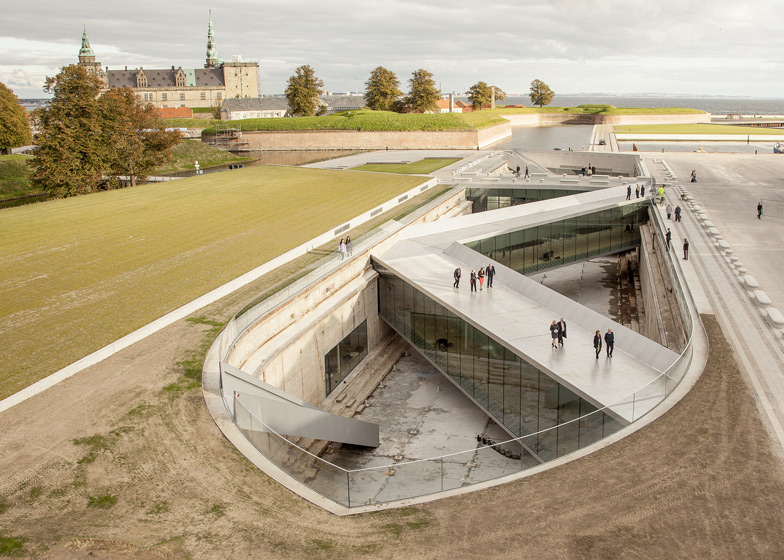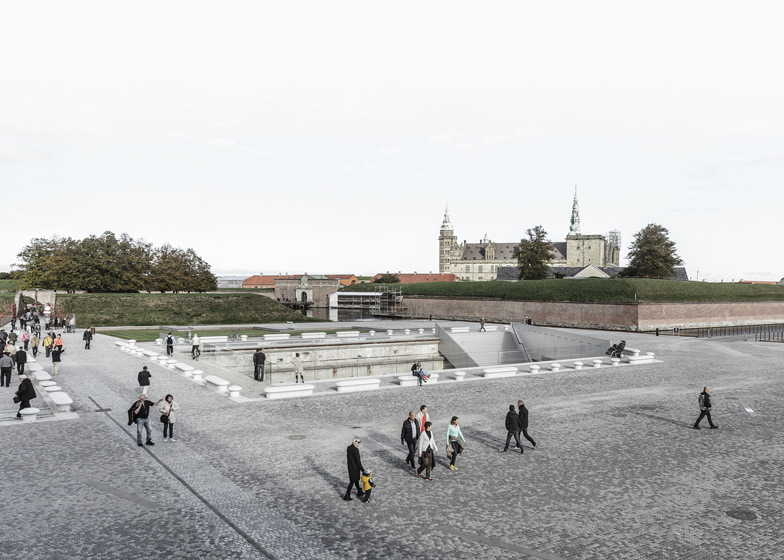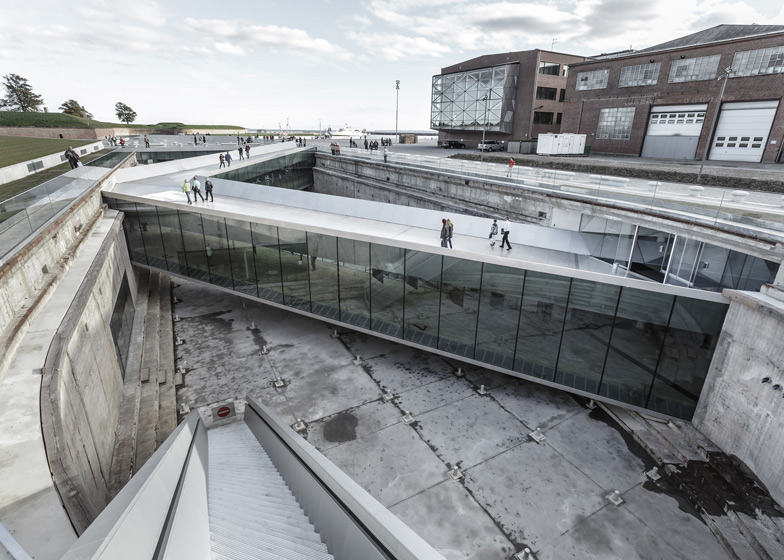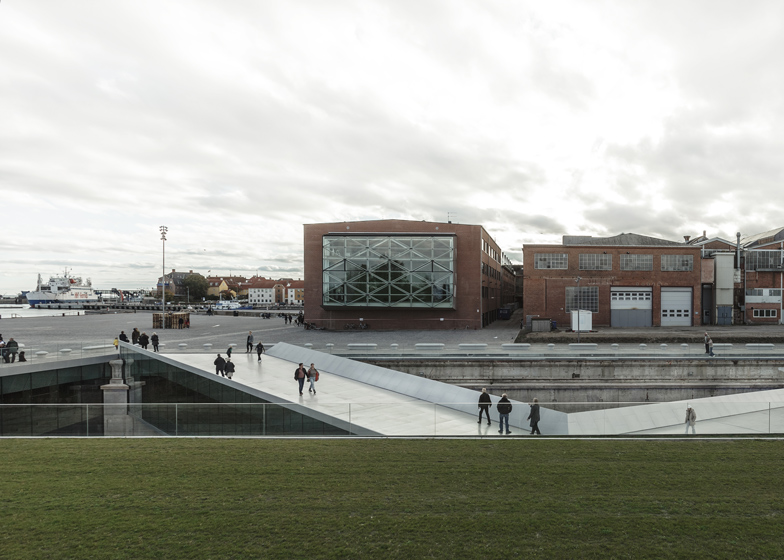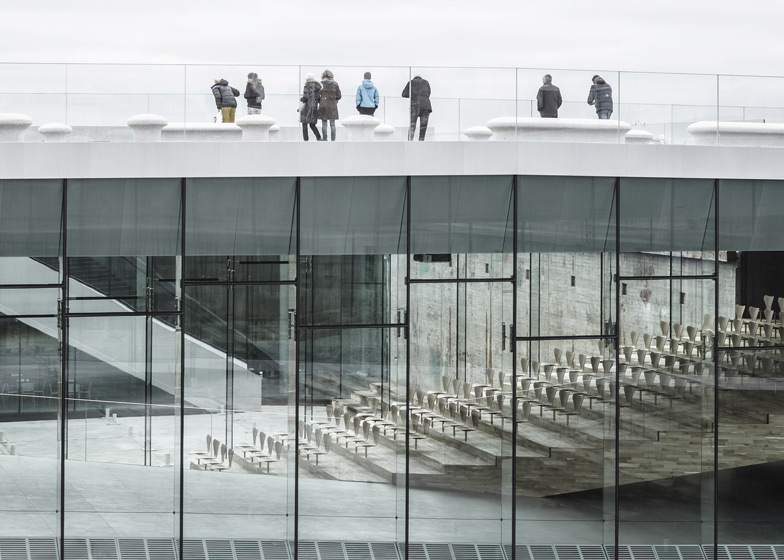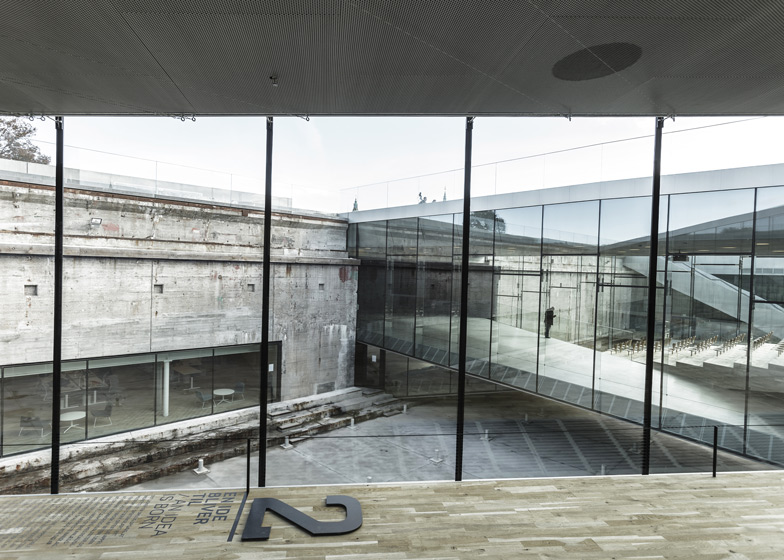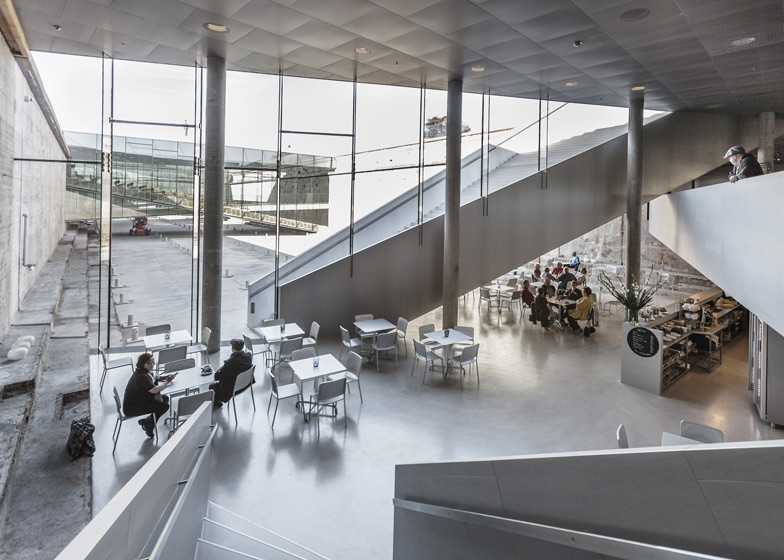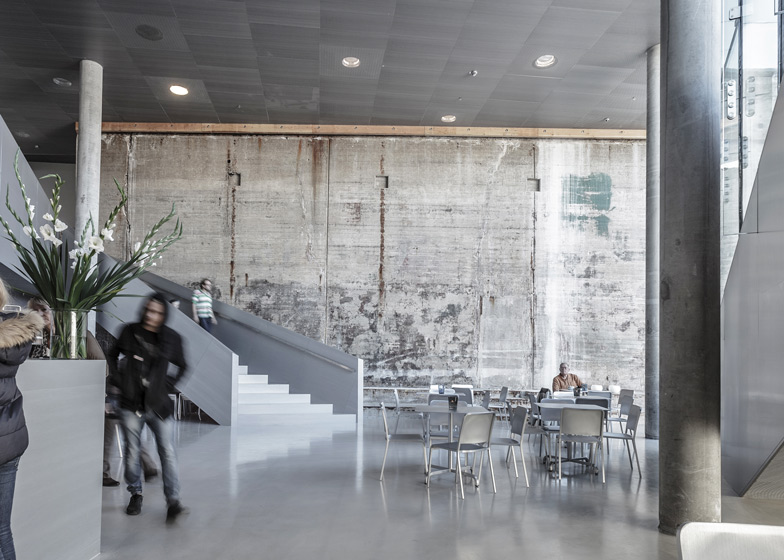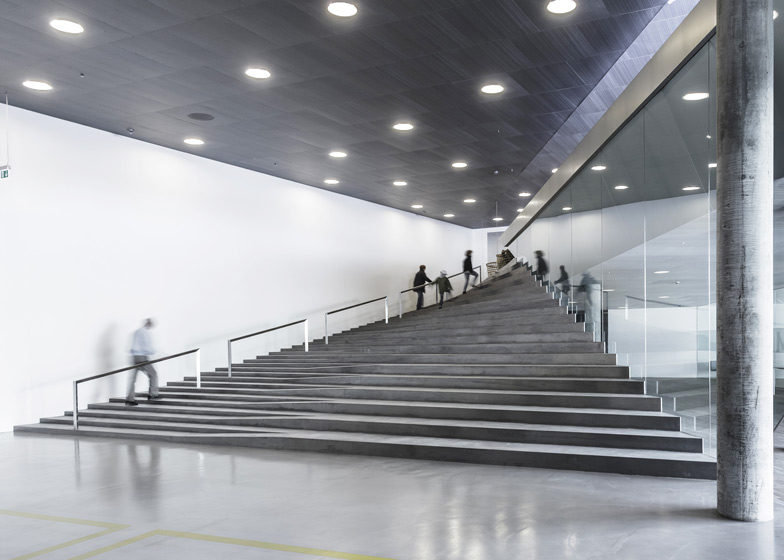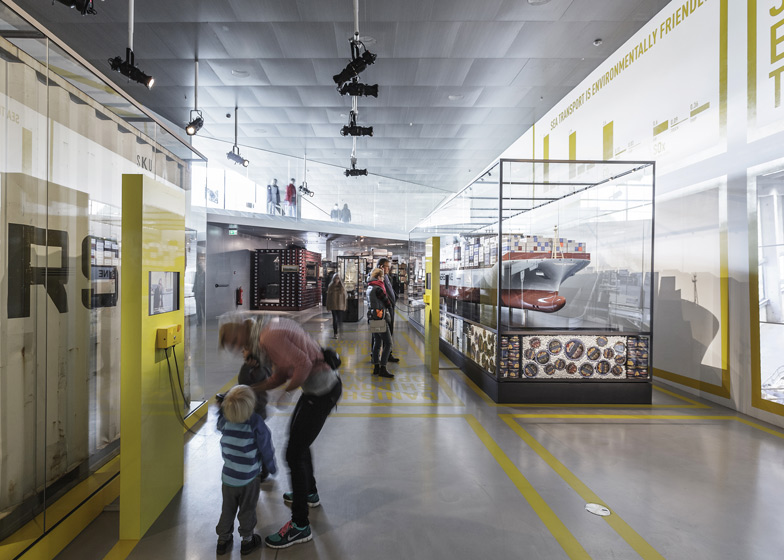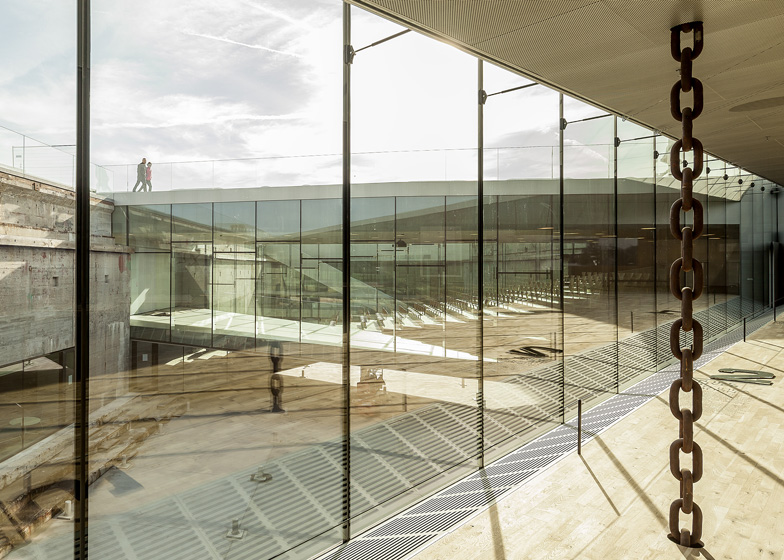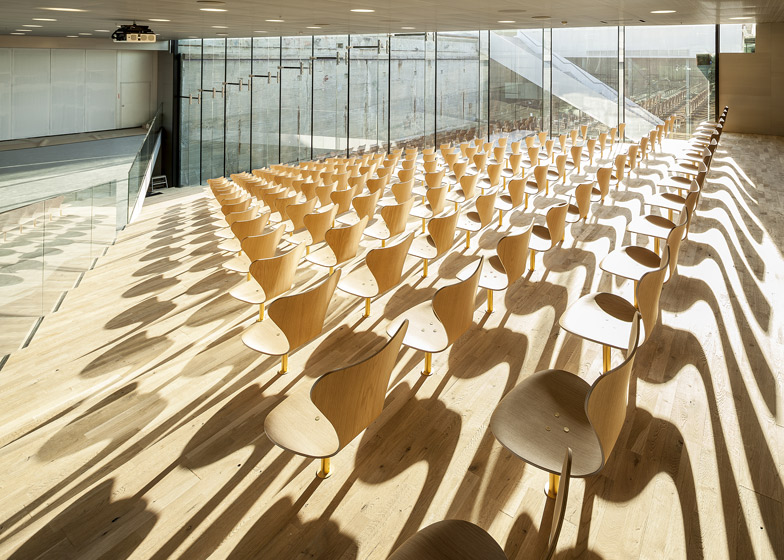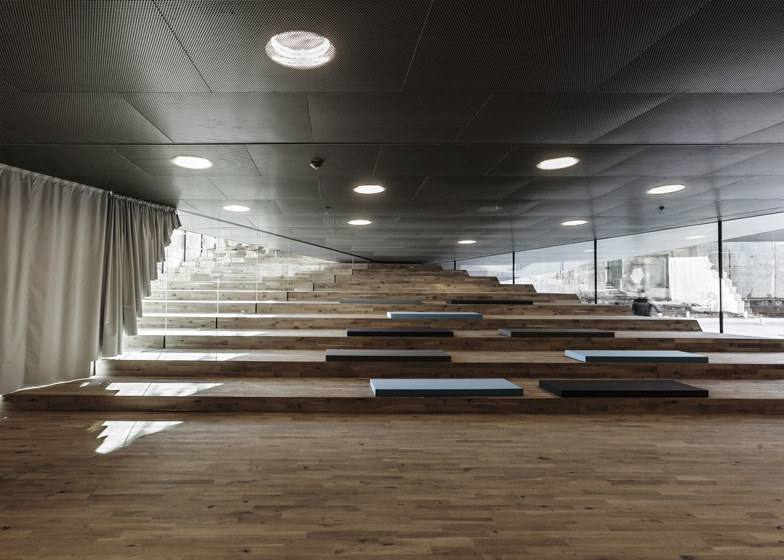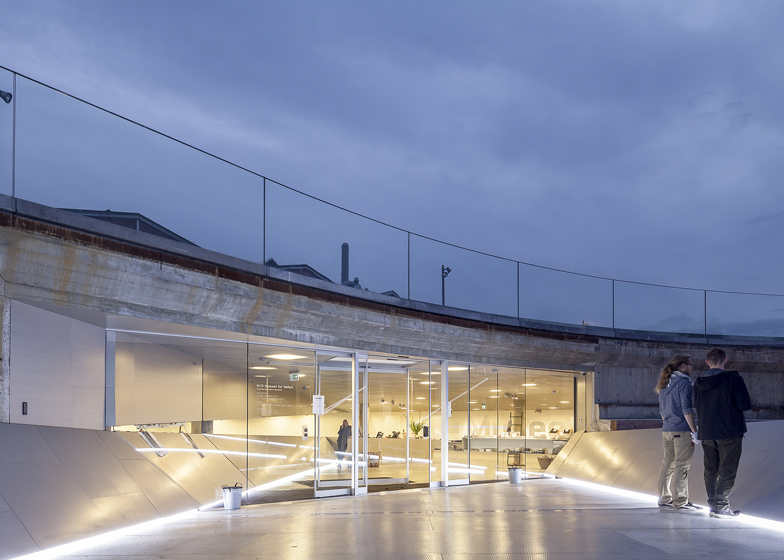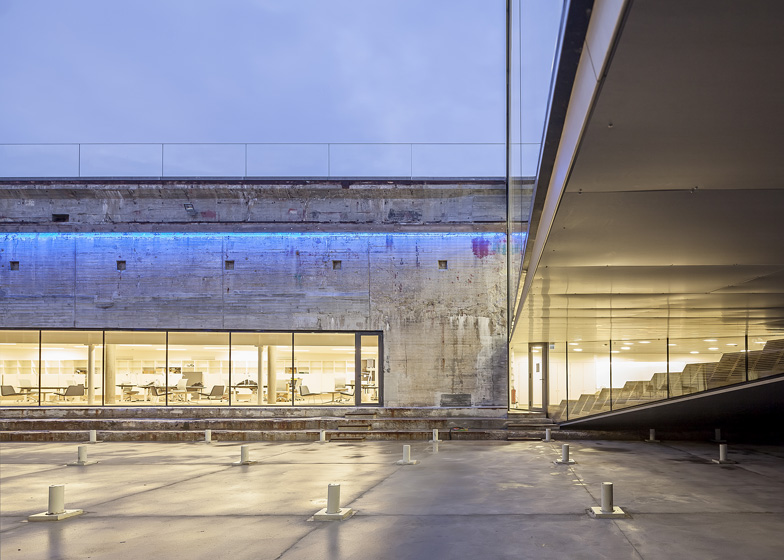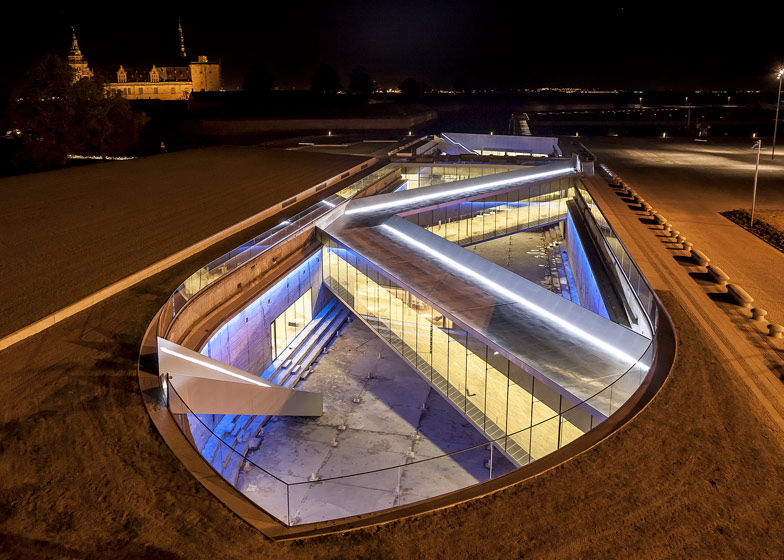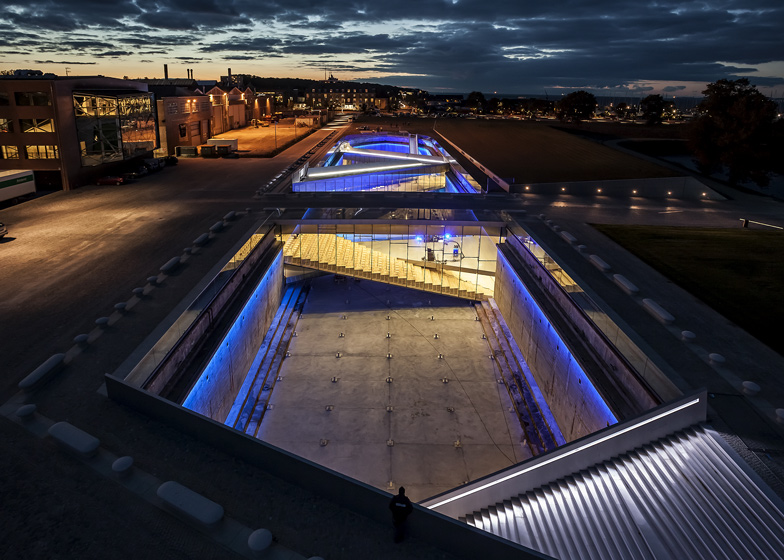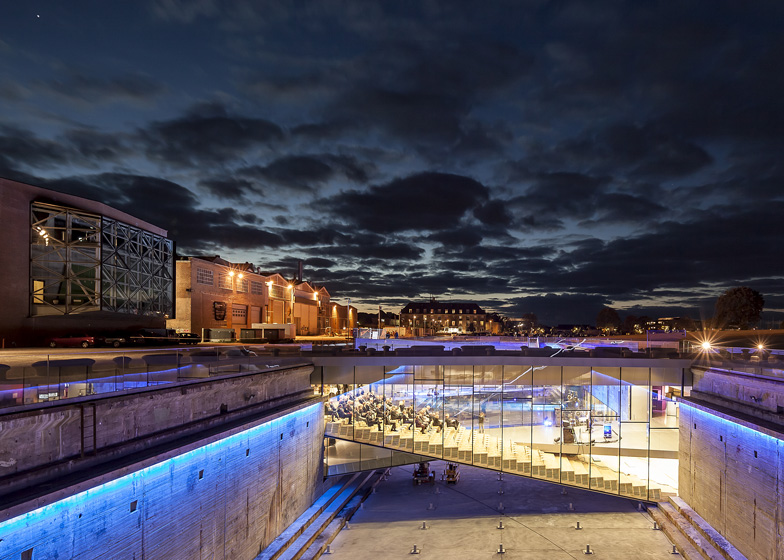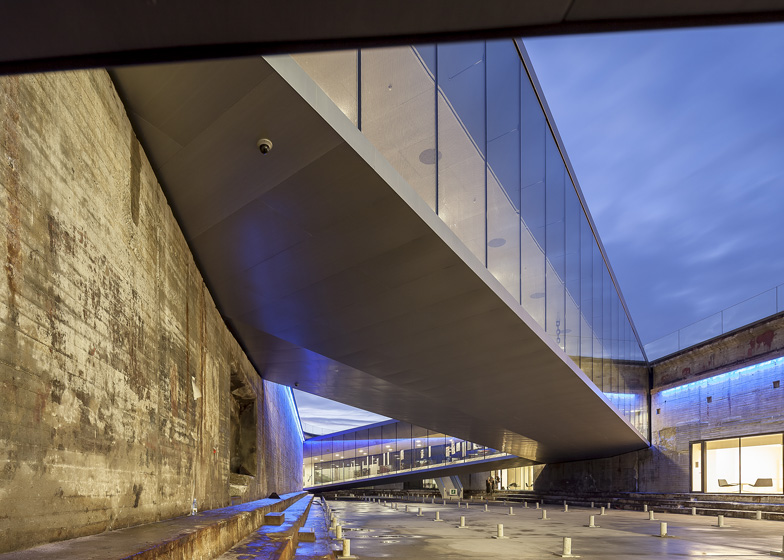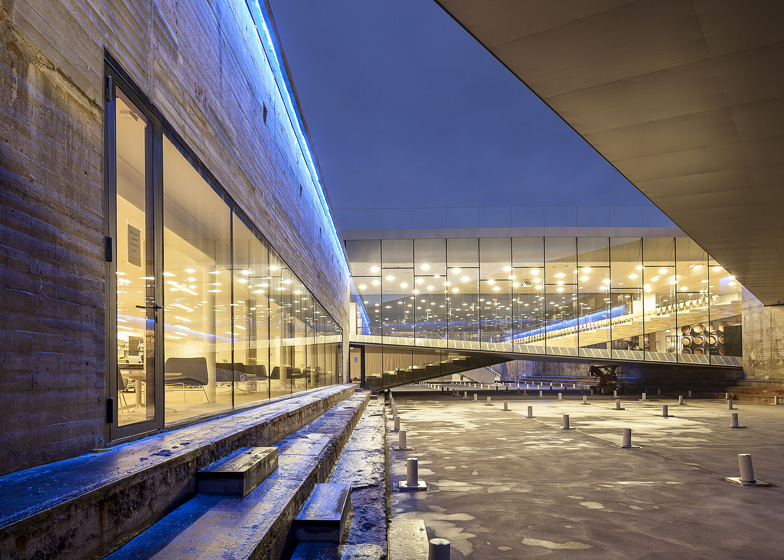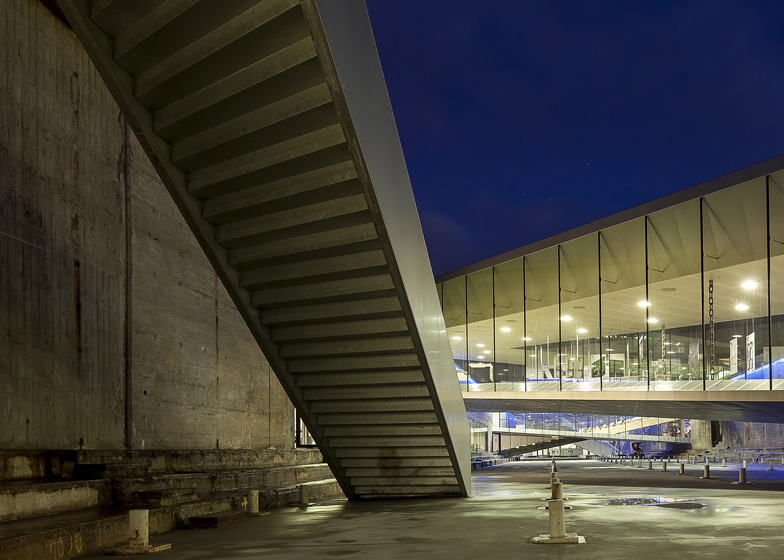Danish architecture studio BIG has completed an underground maritime museum that loops around an old dry dock in Helsingør, Denmark (+ slideshow).
Rather than filling the empty dock, BIG chose to repurpose it as a public courtyard at the centre of the new museum, then added a series of bridges that cut into the 60-year-old walls.
Located in the surrounds of Kronborg Castle, which dates back to the fifteenth century, the Danish Maritime Museum forms part of the Kulturhavn Kronborg initiative - an effort to bring cultural attractions to Helsingør's harbour.
The museum's underground galleries present the story of Denmark's maritime history up to the present day, contained within a two-storey rectangular structure that encases the dry dock.
"By wrapping the old dock with the museum program we simultaneously preserve the heritage structure, while transforming it to a courtyard bringing daylight and air in to the heart of the submerged museum," said Bjarke Ingels, the founding partner of BIG.
The architect also emphasises that the presence of the dock allows the museum to be visible, without impacting on views towards the adjacent castle.
"Out of respect for Hamlet's Castle we needed to remain completely invisible and underground, but to be able to attract visitors we needed a strong public presence," he said. "Leaving the dock as an urban abyss provides the museum with an interior facade facing the void and at the same time offers the citizens of Helsingør a new public space sunken eight metres below the level of the sea."
A trio of double-level bridges span the dock. The first run directly across, forming an extension of the harbour promenade, while the second and third lead visitors gradually down to the museum's entrance.
An auditorium is contained inside one, while the others form extensions of the galleries, which were put together by exhibition designers Kossmann.Dejong.
KiBiSi, the design studio co-run by Ingels, created a collection of street furniture to line the edge of the site, arranged as dots and dashes to resemble Morse code.
BIG won a competition to design the museum in 2007. It officially opened to the public earlier this month.
Here's some more information from BIG:
BIG completes the Danish National Maritime Museum
BIG with Kossmann.dejong+Rambøll+Freddy Madsen+KiBiSi have completed the Danish National Maritime Museum in Helsingør. By marrying the crucial historic elements with an innovative concept of galleries and way-finding, BIG's renovation scheme reflects Denmark's historical and contemporary role as one of the world's leading maritime nations.
The new Danish National Maritime Museum is located in Helsingør, just 50 km (30 mi.) north of Copenhagen and 10 km (6.5 mi.) from the world famous Louisiana Museum for Modern Art.
The new 6,000 m² (65,000 ft²) museum finds itself in a unique historical context adjacent to one of Denmark's most important buildings, Kronborg Castle, a UNESCO World Heritage site - known from Shakespeare's Hamlet. It is the last addition to Kulturhavn Kronborg, a joint effort involving the renovation of the Castle and two new buildings – offering a variety of culture experiences to residents and visitors to Helsingør.
Leaving the 60 year old dock walls untouched, the galleries are placed below ground and arranged in a continuous loop around the dry dock walls - making the dock the centrepiece of the exhibition - an open, outdoor area where visitors experience the scale of ship building.
A series of three double-level bridges span the dry dock, serving both as an urban connection, as well as providing visitors with short-cuts to different sections of the museum. The harbour bridge closes off the dock while serving as harbour promenade; the museum's auditorium serves as a bridge connecting the adjacent Culture Yard with the Kronborg Castle; and the sloping zig-zag bridge navigates visitors to the main entrance. This bridge unites the old and new as the visitors descend into the museum space overlooking the majestic surroundings above and below ground. The long and noble history of the Danish Maritime unfolds in a continuous motion within and around the dock, 7 metres (23 ft.) below the ground. All floors - connecting exhibition spaces with the auditorium, classroom, offices, café and the dock floor within the museum - slope gently creating exciting and sculptural spaces.
Bjarke Ingels: "By wrapping the old dock with the museum program we simultaneously preserve the heritage structure while transforming it to a courtyard bringing daylight and air in to the heart of the submerged museum. Turning the dock inside out resolved a big dilemma; out of respect for Hamlet's Castle we needed to remain completely invisible and underground – but to be able to attract visitors we needed a strong public presence. Leaving the dock as an urban abyss provides the museum with an interior façade facing the void and at the same time offers the citizens of Helsingør a new public space sunken 8 m (16 ft.) below the level of the sea."
KiBiSi has designed the above ground bench system. The granite elements are inspired by ship bollards and designed as a constructive barrier that prevents cars from driving over the edge. The system is a soft shaped bench for social hangout and based on Morse code - dots and dashes writing a hidden message for visitors to crack.
The exhibition was designed by the Dutch exhibition design office Kossmann.dejong. The metaphor that underpins the multimedia exhibition is that of a journey, which starts with an imagining of the universal yearning to discover far away shores and experience adventures at sea. Denmark's maritime history, up to the current role of the shipping industry globally, is told via a topical approach, including notions such as harbour, navigation, war and trade. The exhibition has been made accessible for a broad audience through the intertwining of many different perspectives on the shipping industry.
David Zahle, Partner-in-Charge: "For 5 years we have been working on transforming the old concrete dock into a modern museum, which required an archaeologist care and spacecraft designer's technical skills. The old lady is both fragile and tough; the new bridges are light and elegant. Building a museum below sea level has taken construction techniques never used in Denmark before. The old concrete dock with its 1.5 m thick walls and 2.5 m thick floor has been cut open and reassembled as a modern and precise museum facility. The steel bridges were produced in giant sections on a Chinese steel wharf and transported to Denmark on the biggest ship that has ever docked in Helsingør. The steel sections weigh up to 100 tons a piece and are lifted on site by the two largest mobile cranes in northern Europe. I am truly proud of the work our team has carried out on this project and of the final result."
On Saturday October 5, Her Majesty Queen Margrethe II, cut the ribbon to mark the grand opening. The new Danish National Maritime Museum is open to the public for outdoor activities, exhibitions and events, making the museum a cultural hub in the region throughout the year.

